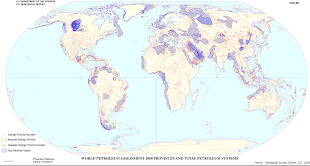Shoreline, Coastal, Shelf Margin or Facies Trajectory
A shoreline or shelf margin trajectory is the path taken by the shoreline or shallow shelf margin facies as they change position when a sedimentary basin fills (Helland-Hansen & Martinsen, 1996). These trajectories are controlled by rates of change in base level (as expressed by rates of change in accommodation, or the sum of eustatic change and tectonic movement of the substrate), varying rates of sediment accumulation, and the slope and shape of the basin margin and floor and their depths. The evolution in the geometry of clinoformed margins, be they carbonates [e.g.: margin of the Permian Basin of Texas and New Mexico (Kendall et al, 1989; Borer and Harris, 1995; Kerrans & Fitchen, 1995; and Hunt et al, 2000) the Miocene reefs of Mallorca (Pomar, 1994) the upper Tertiary of the Bahamian Platform, Eberli et al.,1994, etc.)] and/or clastics [the Tertiary of Spitsbergen (Steel et al, 1985), the Lower Cretaceous of South Africa and the NPRA (Kendall et al, 2000), etc] are well known, though the trajectory paths of these features have not been necessarily been described. Never the less their evolving geometries have been used as standards to explain basin margin progradation. Essentially these trajectories are responsible for the retrogradational, progradational and aggradatonal stacking patterns described by Van Wagoner, et al, 1990.

The concept of facies trajectory coupled with stacking patterns represents a critical tool to the interpretation of shoreline and shelf carbonate and clastic sedimentary systems. It aids in the determination of the depositional setting of the component system tracts and enables the prediction of the extent and character of these sedimentary geometries, often at the same scale as the components of local hydrocarbon reservoirs. This enhances the stratigraphers ability to find, map and exploit hydrocarbon reservoirs more effectively. Theoretically the trajectory of the shoreline located on the margin of a basin that deepens offshore should track the response of sedimentary fill to the movement of relative sea level. Thus during a sea level fall of the Falling (or Early) Lowstand System Tract (FSST) the shoreline trajectory will be expected to fall offshore during a forced regression; then it may either aggrade or onlap landward, rising above the underlying sedimentary fill during the following Lowstand (or Late Lowstand) System Tract (LST). If the margin or basin floor are shallow enough, the shoreline trajectory will often build out at an initially shallow angle but as the sea level rise outstrips sediment supply the shoreline will retreat, climbing back over the underlying sedimentary fill. During the following transgression, a Transgressive System Tract forms and the shoreline will often be retrogradatonal in character, climbing and building back over the underlying sedimentary fill. During the following relative sea level highstand, if the basin margin is shallow enough then the trajectory of the shoreline will tend to prograde out at a low angle. Should the basin deepen rapidly then the trajectories of the shoreline will tend to steepen, being unable to fill the basin and build out over it. These general rules apply to both clastic and carbonate depositional systems, with the exception that when carbonates have become cemented penecontemporaneously at deposition they can maintain very steep margin trajectories, and, as in the modern Bahamas, may form cliffed margins in a submarine setting. Thus the trajectories of the shoreline range from those that build seaward either falling at high or low angles; project out horizontally or climb up at low, high angles or aggrade vertically. Trajectories can also move landward at low or high angles. These patterns are well enough defined that the relationships between different shoreline trajectories, and facies in a basin are used to predict sedimentary facies along strike where different shoreline and shelf margin trajectories occur within the depositional basin. This rational is at the heart of using stacking patterns to establish which system tract is responsible for which geometric pattern and which facies may be expected up dip and down dip. The thesis presented here is that the interpretation of shoreline trajectory conjointly with stacking patterns best involves the creation of three-dimensional models that simulate facies progradational, retrogradational and aggradational trajectory signals. The resulting geometries then show how these are a response to changes in the character of accommodation and varying rates of sediment accumulation. In order to build these models a sequence stratigraphic analysis must be conducted in which the emphasis is placed on subdividing the section with correlatable surfaces and the interpretation
 Vertical build up of a sedimentary sequence. Usually occurs when there is a relative rise in sea level produced by subsidence and/or eustatic sea-level rise, and the rate of sediment influx is sufficient to maintain the depositional surface at or near sea level (i.e. carbonate keep-up in a HST [highstand Systems Tract] or clastic HST). Occurs when sediment flux = rate of sea-level rise. Produces Aggradational stacking patterns in parasequences when the patterns of facies at the top of each parasequence are essentially the same (Posamentier, 1999; Wilgus et al.; 1988, Emery, 1996).
Vertical build up of a sedimentary sequence. Usually occurs when there is a relative rise in sea level produced by subsidence and/or eustatic sea-level rise, and the rate of sediment influx is sufficient to maintain the depositional surface at or near sea level (i.e. carbonate keep-up in a HST [highstand Systems Tract] or clastic HST). Occurs when sediment flux = rate of sea-level rise. Produces Aggradational stacking patterns in parasequences when the patterns of facies at the top of each parasequence are essentially the same (Posamentier, 1999; Wilgus et al.; 1988, Emery, 1996).











